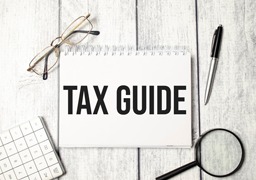# incometaxact
12 posts in `incometaxact` tag

CBDT's Relaxation of TDS/TCS Provisions
The Central Board of Direct Taxes (CBDT) has introduced a relaxation in Tax Deduction at Source (TDS) and Tax Collection at Source (TCS) provisions for cases where the deductee or collectee has passed away before linking their Permanent Account Number (PAN) with Aadhaar. This relaxation provides relief to family members and heirs of deceased taxpayers who may be facing difficulties in obtaining the refund of excess TDS or TCS deducted or collected. In this blog, we will delve into the details of this relaxation and its implications on taxpayers.

TDS on Salary: An Extensive Guide on Income Tax Act Section 192
This article provides a comprehensive guide to TDS on salary and Section 192 of the Income Tax Act. It explains how TDS is calculated, deducted, and deposited with the government, and highlights the responsibilities of employers and employees. The article also covers tax exemption and deduction limits, making it a valuable resource for anyone looking to understand TDS on salary.

Understanding Section 156 of the Income Tax Act
Receiving an income tax notice can be a daunting experience, especially if you're unsure of what it entails. Section 156 of the Income Tax Act is a crucial provision that deals with outstanding tax demands. This blog post provides a comprehensive guide to understanding income tax notices under Section 156, including what it means, how to respond, and the consequences of delay.

Unlocking Section 80EEA's Benefits: A Comprehensive Guide to Affordable Housing
This blog offers a thorough explanation of Section 80EEA, an Indian tax deduction for first-time homebuyers. It describes the advantages, requirements for eligibility, and steps involved in claiming an interest deduction on home loans of up to Rs. 1.5 lakhs. The blog attempts to make affordable housing a reality and assist first-time homebuyers in understanding the provision.

Section 135A of the Income Tax Act
This blog offers a thorough explanation of Section 135A of the Income Tax Act, which mandates that certain taxpayers include extra information about transactions with individuals outside of India in their tax audit report. The blog discusses Section 135A's requirements, such as who must comply, what information must be supplied, and the consequences of not complying. For taxpayers, chartered accountants, and tax professionals who need to know how Section 135A will affect their tax compliance responsibilities, it is a must-read.

Unlocking Section 10(13A) Benefits: An All-Inclusive Guide to House Rent Allowance (HRA)
This blog post provides a detailed guide to Section 10(13A) of the Income Tax Act, which allows salaried individuals to claim exemption on House Rent Allowance (HRA) received from their employers. The post covers the eligibility criteria, calculation, and documents required to avail this tax benefit, making it a valuable resource for individuals looking to optimize their tax planning.
.jpg)
Sikkim's Tax Exemption History
This blog post delves into the history and implications of Sikkim's unique tax exemption, granted under Section 10(26AAA) of the Income Tax Act. It explains how residents of Sikkim are exempt from income tax and the conditions that apply, providing a comprehensive guide to this special provision.

Explaining Income Tax Notice Section 143(2): A Detailed Guide to Section 143(3) Scrutiny
This blog post provides an in-depth explanation of the income tax notice under Section 143(2) and the scrutiny process under Section 143(3). It covers the types of notices, consequences of ignoring, and time limits for issuing notices and final assessment orders, helping taxpayers navigate the complexities of the income tax laws.

Section 148A(d) of the Income Tax Act: What You Need to Know
This comprehensive guide explains Section 148A(d) of the Income Tax Act, covering the procedure for issuing notice, conducting inquiries, and the implications for taxpayers. Get insights into the time limitation clause, approval of specified authority, and exceptions.

Section 57 Deductions - Income Tax Act
A thorough explanation of Section 57 of the Income Tax Act, which permits deductions against income subject to the "Income from other sources" head, is given in this article. It describes the several types of deductions that are permitted under Section 57, including as interest or dividends on tradable financial assets, employee contributions to welfare programs, costs related to rental revenue, and more. The purpose of the essay is to assist taxpayers in comprehending the nuances of Section 57 and in making well-informed decisions regarding their tax compliance and planning.

New TDS Section 194T: What You Need to Know About Tax Deduction on Partner Payments
The Union Budget of 2024 introduced a new section in the Income Tax Act, 1961 - Section 194T. This provision mandates tax deduction at source (TDS) on certain payments made to partners of a firm, including salary, bonus, commission, interest, or remuneration. This blog provides a comprehensive guide to understanding the new TDS Section 194T, its implications, and compliance requirements. It covers the benefits and challenges of this provision, helping firms and partners navigate the new tax landscape.

The Income Tax Act's Sections 115BAB and 115BAA
The Income Tax Act's Sections 115BAB and 115BAA, which are intended to give domestic Indian businesses tax advantages, are thoroughly examined in this blog. While Section 115BAA gives existing domestic companies a lower tax rate to improve competitiveness and simplify the tax system, Section 115BAB targets new manufacturing companies with a reduced tax rate to encourage industrial expansion. In order to assist businesses in selecting the section that best meets their needs, the blog provides a comparative study of the salient characteristics, eligibility requirements, benefits, and compliance requirements of each section. Comprehending these provisions can result in noteworthy tax benefits and enhance the financial well-being and expansion of Indian enterprises.
